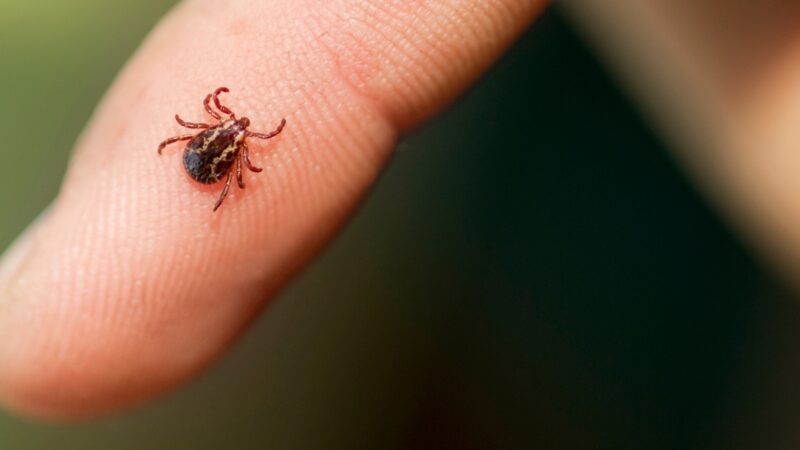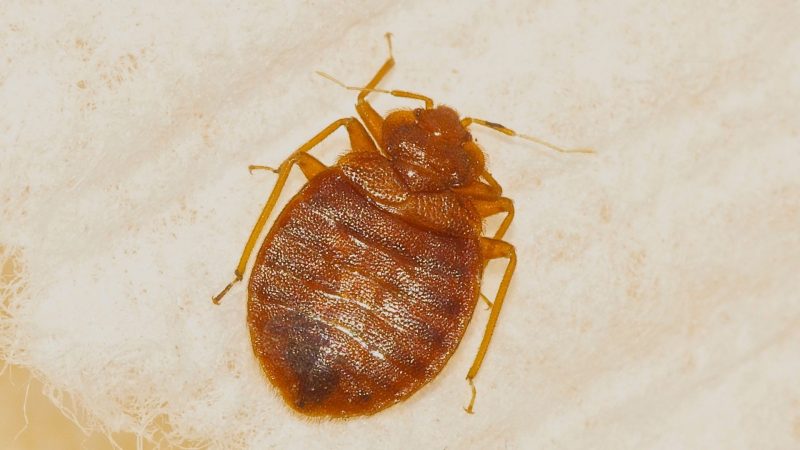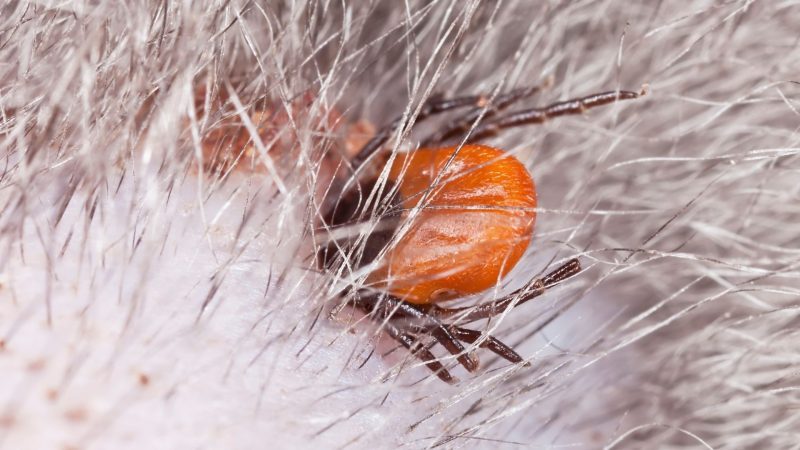Ticks and bed bugs appear to be highly similar at first glance. They’re both creepy-looking tiny insects with roughly the same size and color. People believe that both insects are related or even think they are the same species.
Are ticks and bed bugs related? Ticks and bed bugs may appear to be the same, but they are not related. They are two different species and belong to different classes. Ticks are animals with 8 legs that belong to the arachnid family, which includes spiders and scorpions. Bed bugs, on the other hand, are six-legged parasitic insects.
It may come as a surprise to learn that ticks and bed bugs are unrelated and belong to separate groups. In this article, you’ll discover more about the differences and similarities between ticks and bed bugs and much more.
Are Ticks and Bed Bugs the Same?

They just look the same, but they are different creatures. Ticks are arachnids, which are spider-like animals. Bed bugs, on the other hand, are parasitic insects.
What Are the Differences Between Ticks and Bed Bugs?
There are a number of differences between ticks versus bed bugs.
Size
When unfed, ticks and bed bugs are nearly exactly the same size to the naked eye. Though it varies by species, ticks are 3-4 mm while big bugs are 8 mm.
Color
After feeding, bed bugs change color from reddish-brown to a deeper shade of red. In comparison to bed bugs, ticks have a wider range of hues. Species-specific variations include tan stripes, a white spot, or darker legs and a light body, despite the fact that they are normally dark brown or reddish-brown like bed bugs
Shape
Both ticks and bed bugs are flat, oval- or seed-shaped, and without wings. The width difference between a tick’s top and bottom halves is not as great as it is for bed bugs since ticks have slightly narrower bodies.
Number of Legs
Bed bugs and ticks are members of different classes and have various numbers of legs. Ticks have eight legs and are arachnids, like spiders. Bed bugs are six-legged insects.
Host
Ticks often prefer to feed on animals. However, if there are no animals nearby, ticks will bite humans. On the other hand, bed bugs prefer to eat humans and will only attack your pets if other bed bugs have forced them away from a fresh human meal.
Bites
When obtaining a meal, ticks bury their heads into their prey and cling on until they are satisfied. Ticks will remain attached to their host for one to two days if they are not disturbed. When you scratch, bed bugs will perch on the top layer of your skin and reveal a small area. However, they never burying their head. They will drink through a protrusion that resembles a straw.
What Do Ticks and Bed Bugs Look Like?

Both are red to brownish in color. They both have the appearance of tiny, round, flat insects with no wings. Their legs, however, are significantly different. Bed bugs have 6 legs, whereas ticks have 8. Most common ticks also have darker legs with stripes.
How Big Are Bed Bugs Compared to Ticks?

Using seeds as a reference is the most frequent technique to compare the sizes of bed bugs and ticks. Ticks are the size of a sesame seed, about 3 to 4 millimeters, and bed bugs are the size of an apple seed, about 8 millimeters. Since both of them are relatively tiny, it’s common to mistakenly think they’re around the same size. However, bed bugs are typically much larger than ticks, up to double their size.
Do Bed Bugs Latch Onto the Skin Like Ticks?
Bed bugs and ticks both feed on blood, but bed bugs eat differently from ticks. They use an extended beak that looks like a straw to pierce the skin and suck the blood out. Bed bugs do not burrow their heads into the skin, and they also do not latch onto it.
What Do Ticks and Bed Bugs Feed?

Both ticks and bed bugs feed on blood as they are considered parasites. However, ticks prefer to feed on animals’ blood, which is why they are frequently seen latching onto dogs and cats. On the other hand, bed bugs prefer to feed on human blood.
What Time of the Day Do Ticks and Bed Bugs Bite?
Bed bugs are more active at night or when their hosts are sleeping because this is when they can properly feed. Ticks prefer to feed during the day when the temperature is higher. However, common ticks have also been found to be active at any time of the day.
How Long Do Tick Bites Last?

Tick bites commonly last within two days. You will feel a burning sensation on the bitten area with a red spot on it.
If bitten, wash and clean the wound immediately. Alcohol or alcohol-based liquid can also be applied to the wound to prevent infection.
How Long Does Bedbug Bite Last?
Bed bug bites last within one to two weeks. The most common symptom is itching on the bitten area. Additional symptoms are a burning sensation on the bitten area, with small red bumps and blisters in the middle of the bump.
If bitten, clean the wounds with soap and water. Apply anti-itch creams. You can also take antihistamine medication to help lessen the itch.
What Is the Natural Habitat of Ticks and Bed Bugs?

Because bed bugs prefer to feed on human blood, their natural habitat is indoors, where their host is always present. They like wood and cloth surfaces to live on. That’s why they are mostly found in beds, bed frames, couches, mattresses, doors, wood furniture, dressers, wallboards, as well as any wood or cloth surfaces where people are likely to be sleeping or resting.
Meanwhile, ticks can be found outdoors, particularly in gardens, lawns, and yards, with woods, shrubs, and grasses where they can wait and latch onto their host. These insects can also be found in the wild, living on woods, branches, and tall grasses, where they can also feed on animals like deer, rodents, and birds. However, they are more commonly found at home, where pet cats and dogs are sheltered.
Are Ticks and Bed Bugs Spreader of Disease? What Diseases Do They Transmit?
There is no evidence yet that bed bugs transmit diseases. On the other hand, ticks are known to carry extremely harmful diseases to humans and pets. These diseases are also called tick-borne diseases.
The most common and well-known disease that a tick can transmit is called Lyme disease. Common symptoms of this disease are fever, headache, fatigue, muscle pain, and skin rashes. Additional tick-borne diseases are babesiosis, ehrlichiosis, Rocky Mountain spotted fever, and anaplasmosis. The symptoms of these diseases are also similar, with a focus on fever and fatigue.
How to Get Rid of Bed Bugs and Ticks?
Since bed bugs are living indoors, mostly on beds, sofas, and couches, hiring professional pest management is one option. However, techniques that may be used without the need for employment can be done through the following:
- Determine which places, such as the bed mattress, linens, sofa, and couch, are infested with bed bugs. Then, clean and wash them.
- Using a vacuum is also an excellent way to eliminate bed bugs and their eggs.
- Using items that are commonly found in homes as remedies can also be helpful, such as borax, rubbing alcohol, and vinegar, which can kill bed bugs.
- Chemical treatments can also be highly helpful in getting rid of bed bugs and have a higher success rate. Using pesticides like pyrethrins and pyrethroids, which are the most commonly used by many, are effective in getting rid of bed bugs.
Related: Natural Ways to Get Rid of Bed Bugs | Safe and Effective Methods
On the other hand, the easiest method to get rid of ticks is to destroy their houses, which can be done by following these methods below:
- Cutting tall grasses and mowing the garden regularly can help to get rid of ticks and keep them out of yards and lawns.
- Removing piles of wood can also be helpful since ticks tend to live in the woods.
- Ticks can also be found inside houses, especially if there are pets in the household. The first step should be to ensure that pets have been treated and are clear of ticks.
- Using natural repellents can be one of the easiest techniques for getting rid of ticks inside the house. Chamomile and lemon can effectively repel ticks.
- Rubbing alcohol can also be effective in eliminating ticks.
- Employing a pest control company to deal with ticks is always an option.
Related: How To Get Rid of Ticks in Yard | A Complete Guide
List of Sources
Hill, C., MacDonald, J. (2008). Insects and Ticks: Ticks. Purdue University.
Potter, M. (2020). Bed Bugs. University of Kentucky.
Bed Bugs FAQS. (2020). Centers for Disease Control and Prevention.
- How to Get Rid of Copperheads | Practical Guide - August 27, 2023
- How to Get Rid of Corn Snakes | What Makes Them Aggressive? - August 27, 2023
- How to Get Rid of Alligators | Safety Measures and Removal Methods - July 16, 2023
